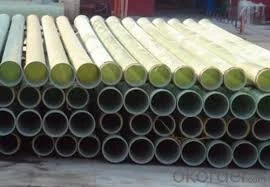
-
 Afrikaans
Afrikaans -
 Albanian
Albanian -
 Amharic
Amharic -
 Arabic
Arabic -
 Armenian
Armenian -
 Azerbaijani
Azerbaijani -
 Basque
Basque -
 Belarusian
Belarusian -
 Bengali
Bengali -
 Bosnian
Bosnian -
 Bulgarian
Bulgarian -
 Catalan
Catalan -
 Cebuano
Cebuano -
 China
China -
 China (Taiwan)
China (Taiwan) -
 Corsican
Corsican -
 Croatian
Croatian -
 Czech
Czech -
 Danish
Danish -
 Dutch
Dutch -
 English
English -
 Esperanto
Esperanto -
 Estonian
Estonian -
 Finnish
Finnish -
 French
French -
 Frisian
Frisian -
 Galician
Galician -
 Georgian
Georgian -
 German
German -
 Greek
Greek -
 Gujarati
Gujarati -
 Haitian Creole
Haitian Creole -
 hausa
hausa -
 hawaiian
hawaiian -
 Hebrew
Hebrew -
 Hindi
Hindi -
 Miao
Miao -
 Hungarian
Hungarian -
 Icelandic
Icelandic -
 igbo
igbo -
 Indonesian
Indonesian -
 irish
irish -
 Italian
Italian -
 Japanese
Japanese -
 Javanese
Javanese -
 Kannada
Kannada -
 kazakh
kazakh -
 Khmer
Khmer -
 Rwandese
Rwandese -
 Korean
Korean -
 Kurdish
Kurdish -
 Kyrgyz
Kyrgyz -
 Lao
Lao -
 Latin
Latin -
 Latvian
Latvian -
 Lithuanian
Lithuanian -
 Luxembourgish
Luxembourgish -
 Macedonian
Macedonian -
 Malgashi
Malgashi -
 Malay
Malay -
 Malayalam
Malayalam -
 Maltese
Maltese -
 Maori
Maori -
 Marathi
Marathi -
 Mongolian
Mongolian -
 Myanmar
Myanmar -
 Nepali
Nepali -
 Norwegian
Norwegian -
 Norwegian
Norwegian -
 Occitan
Occitan -
 Pashto
Pashto -
 Persian
Persian -
 Polish
Polish -
 Portuguese
Portuguese -
 Punjabi
Punjabi -
 Romanian
Romanian -
 Russian
Russian -
 Samoan
Samoan -
 Scottish Gaelic
Scottish Gaelic -
 Serbian
Serbian -
 Sesotho
Sesotho -
 Shona
Shona -
 Sindhi
Sindhi -
 Sinhala
Sinhala -
 Slovak
Slovak -
 Slovenian
Slovenian -
 Somali
Somali -
 Spanish
Spanish -
 Sundanese
Sundanese -
 Swahili
Swahili -
 Swedish
Swedish -
 Tagalog
Tagalog -
 Tajik
Tajik -
 Tamil
Tamil -
 Tatar
Tatar -
 Telugu
Telugu -
 Thai
Thai -
 Turkish
Turkish -
 Turkmen
Turkmen -
 Ukrainian
Ukrainian -
 Urdu
Urdu -
 Uighur
Uighur -
 Uzbek
Uzbek -
 Vietnamese
Vietnamese -
 Welsh
Welsh -
 Bantu
Bantu -
 Yiddish
Yiddish -
 Yoruba
Yoruba -
 Zulu
Zulu
High-Quality Fiberglass Chemical Tanks for Safe Storage Solutions
Exploring Fiberglass Chemical Tanks A Reliable Solution for Storage Needs
In today’s industrial landscape, safety and efficiency in the storage of chemicals are paramount. One of the most effective solutions for storing corrosive and hazardous materials is fiberglass chemical tanks. These tanks, constructed from a composite material of glass fibers and resin, offer a plethora of benefits over traditional storage options like metal or plastic tanks.
Durability and Corrosion Resistance
One of the standout features of fiberglass chemical tanks is their remarkable durability. Unlike steel tanks that can corrode over time, fiberglass is inherently resistant to a wide array of chemicals, including acids, alkalis, and solvents. This resistance significantly reduces the risk of leaks and failures, making fiberglass tanks ideal for industries such as chemical manufacturing, waste treatment, and pharmaceuticals.
Furthermore, fiberglass tanks are less prone to cracking and chipping compared to their plastic counterparts. This resilience ensures that these tanks can withstand harsh environmental conditions, including extreme temperatures and exposure to UV rays. As a result, companies can rely on fiberglass tanks for long-term, safe storage.
Lightweight and Cost-Effective
Another advantage of fiberglass chemical tanks is their lightweight composition. This characteristic not only makes transportation easier but also simplifies the installation process. Since they are easier to handle, the labor costs associated with installing fiberglass tanks can be lower than those for heavier materials. Additionally, the lower weight can lead to reduced structural requirements for supporting foundations.
Cost-effectiveness is a critical factor in any industrial choice. While the initial investment in fiberglass tanks may be higher than that of traditional materials, their long lifespan and low maintenance requirements often result in lower overall expenses. This longevity is especially significant when compared to the potential costs associated with system failures due to corrosion or chemical degradation.
fiberglass chemical tanks

Customizable Designs
Fiberglass tanks can be tailored to meet specific needs, which is another compelling advantage. They can be designed in various shapes and sizes, accommodating a wide range of storage capacities. This flexibility allows businesses to choose tanks that best fit their operational requirements without compromising on safety or efficiency.
Advanced manufacturing techniques, such as filament winding and spray-up methods, enable manufacturers to produce tanks with varying wall thicknesses and reinforcement configurations. This customization ensures optimal strength and chemical compatibility, tailored specifically for the stored substances.
Environmental Considerations
Using fiberglass chemical tanks can also be an environmentally friendly choice. The materials used in fiberglass construction can be produced with lower energy consumption compared to metals. Moreover, the corrosion resistance of fiberglass minimizes the risk of leaks and spills, protecting the surrounding environment from potential contamination.
Additionally, many fiberglass tanks are designed to meet environmental regulations, ensuring compliance with local and national standards for chemical storage. This not only protects the environment but also shields companies from potential legal liabilities associated with spills or environmental damage.
Conclusion
In conclusion, fiberglass chemical tanks represent a reliable and efficient solution for various industries requiring secure chemical storage. Their durability, lightweight design, cost-effectiveness, customization options, and environmental benefits make them an attractive choice for businesses aiming to enhance safety and operational efficiency. As the industrial landscape continues to evolve, the adoption of advanced materials like fiberglass will likely play a crucial role in addressing the challenges of chemical storage and management.
Latest news
-
Exploring the Benefits of Top Hammer Drifter Rods for Enhanced Drilling PerformanceNewsJun.10,2025
-
High-Precision Fiberglass Winding Machine for GRP/FRP Pipe Production – Reliable & Efficient SolutionsNewsJun.10,2025
-
FRP Pipes & Fittings for Shipbuilding - Corrosion-Resistant & LightweightNewsJun.09,2025
-
Premium FRP Flooring Solutions Durable & Slip-ResistantNewsJun.09,2025
-
Premium Fiberglass Rectangular Tanks Durable & Lightweight SolutionNewsJun.09,2025
-
Tapered Drill String Design Guide Durable Performance & UsesNewsJun.09,2025









